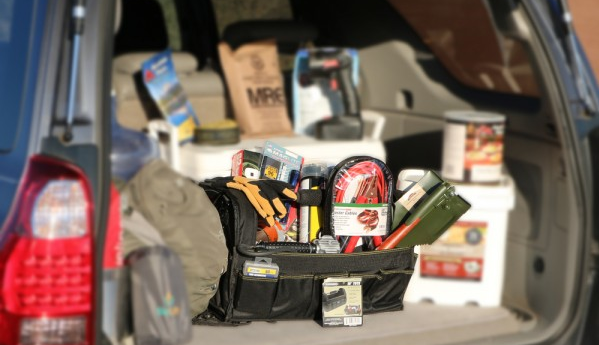Hydroponics and aquaponics can save lives after SHTF
08/23/2021 / By Nolan Barton

Hydroponics and aquaponics can play huge roles in life after SHTF.
For the uninitiated, hydroponics refers to the growing of plants in a nutrient-rich solution rather than soil. Plants can be grown in individual slots in specially designed containers, or they can be grown in batches suspended on a larger water source.
Aquaponics, on the other hand, is similar to hydroponics but adds fish into the system. The fish generate waste which is converted into nutrients that the plants absorb and filter out, providing clean water back to the fish. This benefits both the fish and plants as the solution is continuously pumped through the system.
Setting up and maintaining hydroponics and aquaponics systems are more costly than using traditional farming methods, but not having a plan for producing food after an SHTF event can be more costly or even fatal.
Hydroponics, aquaponics perfect for preppers
Self-reliance is the recurring theme when you talk about being prepared. Growing or raising your food is part of the foundation of that process. (Related: Grow your medicine: Japanese goldthread grown with hydroponics is just as potent as wild variants.)
It’s not easy to grow food. Changing seasons, too much rain, too little rain, extreme temperatures, disease, insects and other predators can all affect crops. You can curtail those troubles by using hydroponics or aquaponics over traditional methods.
While hydroponics and aquaponics can be set up outdoors, one of their best features is that they can be set up indoors. Many of the variables that can affect outdoor crops are much easier to control in an indoor environment and therefore do not pose as much of an issue.
Outdoor space may be minimal, nonexistent or just isn’t conducive to growing plants or raising fish after SHTF. Under that situation, you can set up hydroponics and aquaponics systems in a basement, spare room or any other available indoor space.
The beauty of setting up these systems indoors is that there is no specific design that you must use. As long as the plants and fish are getting what they need, the systems can be as big or as small as you like and they can take the shape of whatever your imagination can come up with. This is incredibly useful when available space is limited.
When it is difficult or even impossible to use traditional methods following a disaster, the ability to use these systems all year long and indoors can be a tremendous benefit.
Hydroponics thriving during COVID-19 pandemic
Hydroponics is a growing industry, with its $9.5 billion in sales expected to nearly double in the next five years. This system helps ease concerns about growing enough food to feed a worldwide population expected to hit 10 billion in the next 30 years.
The system’s growing popularity may be connected to the coronavirus (COVID-19) pandemic.
“As soon as the pandemic was declared in mid-March and the quarantine took effect, we saw immediate growth spikes, unlike anything we’d ever seen before,” said Paul Rabaut, director of marketing for AeroGarden, which produces systems for in-home crop production.
Rabaut said the increase in interest on hydroponics resulted from the need for entertainment beyond Netflix and jigsaw puzzles, a desire to minimize trips to the grocery store and the promise of teachable moments for kids now schooled at home.
Aquaponics safe against pathogenic risks
Aquaponics is also growing in popularity. It has been continuously proven to be a safe method to grow fish, fruits and vegetables in any environment. In an aquaponic system, healthy microbes serve as biological control agents against pathogenic bacteria.
While aquaponics produce is not immune to all pathogenic contamination, it is considered as one of the safest agriculture methods against pathogenic risks.
The most pathogenic contamination in modern agriculture systems stems from bird droppings, animal infestation and agriculture ditch or contaminated water sources. Commercial aquaponic systems are usually operated in controlled environments like greenhouses, making them less vulnerable to pathogenic contamination. (Related: Aquaponics: Is this promising, sustainable farming method the urbanized future of agriculture?)
In 2019, nonprofit organization Aquaponic Association said that there have been no confirmed reports of human illness due to aquaponic fish or raw produce in the last two decades.
Year-round farming made possible
Most plants are temperature sensitive and therefore can only be grown during certain parts of the year. Fishing can also be regulated by the weather as it may cause some species to move from one region to another. Wintertime in some regions also makes it more difficult to fish.
When the grow tanks are placed indoors, it gives the grower the ability to precisely control environmental temperatures 24 hours a day. This allows for growing seasons that extend throughout the year and you never have to worry about tracking fish down or dealing with weather conditions outside.
Water is always a concern when growing plants – some have it too much, some too little. Some regions have to worry about their gardens and fields becoming flooded while other regions don’t get enough rainfall to grow certain crops.
A lot of water is also often wasted on crops through evaporation. Meaning, more water must be used for the roots to get a proper drink. With hydroponics and aquaponics, water is continuously recycled through the system and it is in constant contact with the roots. Whatever water the plant doesn’t use stays in the system to be used later.
Most importantly, elements have less chance to negatively affect crops and fish since many variables are tightly controlled in hydroponics and aquaponics systems.
Follow CleanFoodWatch.com for more news related to clean foods and farming.
Sources include:
Tagged Under: aquaponic fish, aquaponics, biological control agents, coronavirus, covid-19, covid-19 pandemic, food production, food supply, healthy microbes, hydroponics, off grid, pathogenic bacteria, pathogenic contamination, pathogenic risks, Preppers, prepping, SHTF, survival, traditional farming methods, weather conditions
RECENT NEWS & ARTICLES
COPYRIGHT © 2017 OFFGRID NEWS




















